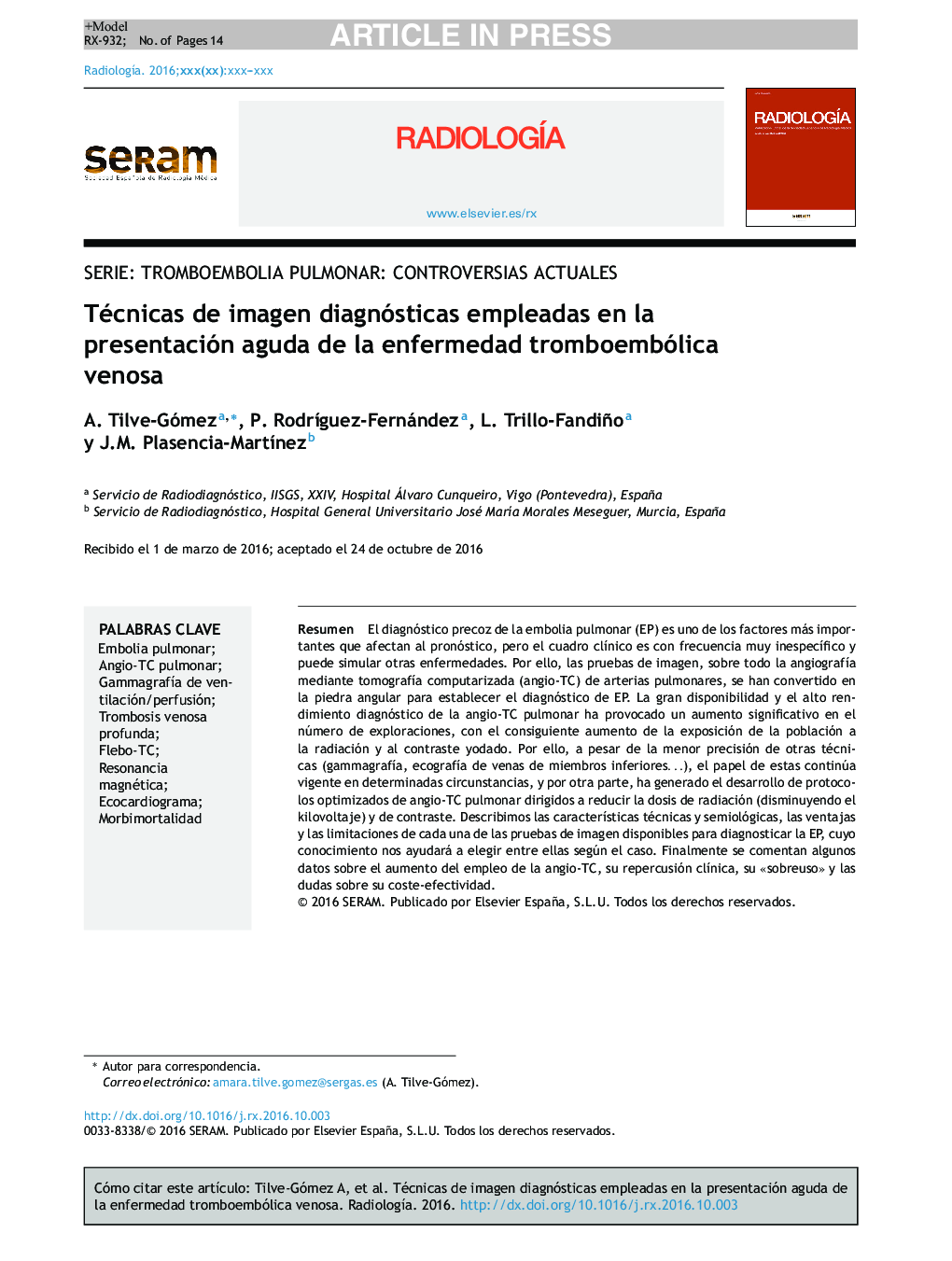| Article ID | Journal | Published Year | Pages | File Type |
|---|---|---|---|---|
| 5728074 | Radiología | 2017 | 14 Pages |
Abstract
Early diagnosis is one of the most important factors affecting the prognosis of pulmonary embolism (PE); however, the clinical presentation of PE is often very unspecific and it can simulate other diseases. For these reasons, imaging tests, especially computed tomography angiography (CTA) of the pulmonary arteries, have become the keystone in the diagnostic workup of PE. The wide availability and high diagnostic performance of pulmonary CTA has led to an increase in the number of examinations done and a consequent increase in the population's exposure to radiation and iodinated contrast material. Thus, other techniques such as scintigraphy and venous ultrasonography of the lower limbs, although less accurate, continue to be used in certain circumstances, and optimized protocols have been developed for CTA to reduce the dose of radiation (by decreasing the kilovoltage) and the dose of contrast agents. We describe the technical characteristics and interpretation of the findings for each imaging technique used to diagnose PE and discuss their advantages and limitations; this knowledge will help the best technique to be chosen for each case. Finally, we comment on some data about the increased use of CTA, its clinical repercussions, its “overuse”, and doubts about its cost-effectiveness.
Keywords
Related Topics
Health Sciences
Medicine and Dentistry
Radiology and Imaging
Authors
A. Tilve-Gómez, P. RodrÃguez-Fernández, L. Trillo-Fandiño, J.M. Plasencia-MartÃnez,
